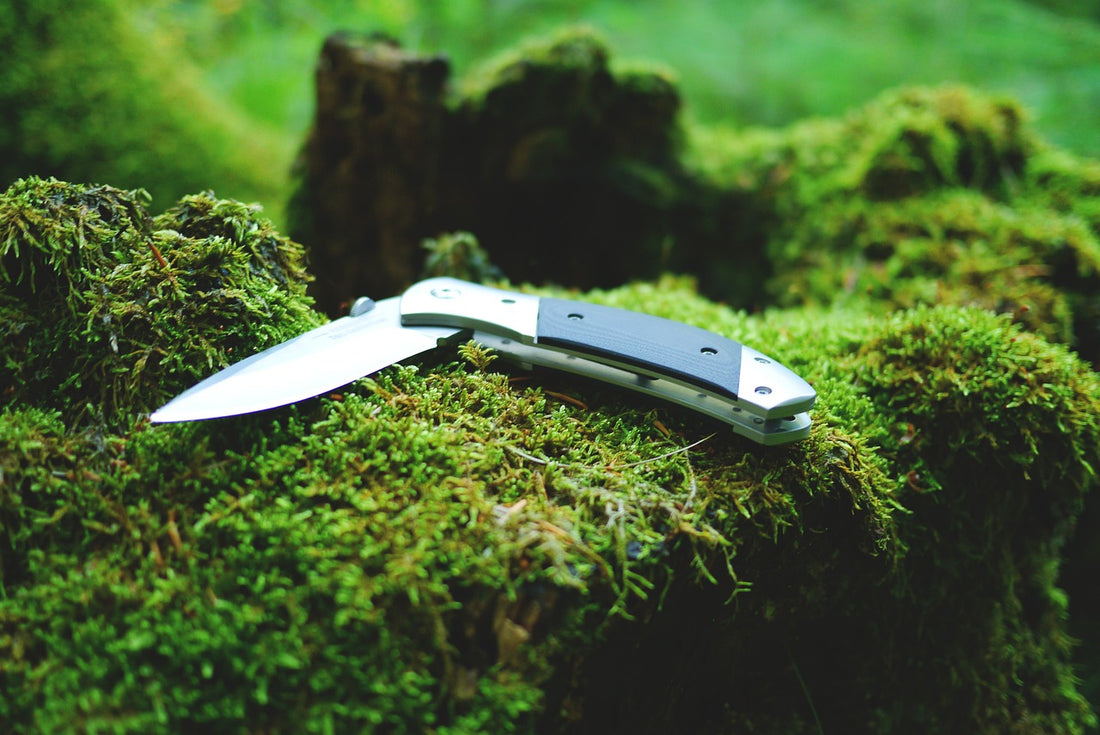
Choosing the Perfect Knife for Outdoor Adventures
Share
When you're out in the wild, your knife is one of your most essential tools. Whether you’re cutting rope, preparing food, or tackling tough survival tasks, a reliable outdoor knife can be the difference between a good day and a bad one. With countless styles and features available, choosing the right knife can seem overwhelming.
At Camuland, we’ve put together this guide to help you make an informed choice based on your specific needs.
1. Blade Type: Fixed vs. Folding
The first decision is choosing between a fixed blade or a folding knife. Both have their merits:
- Fixed Blade Knives: These are ideal for heavy-duty tasks like chopping wood, batoning, or even self-defense. Their durability makes them a favorite for bushcraft and survivalists. However, they are bulkier to carry.
- Folding Knives: Perfect for lighter activities, folding knives are compact, easy to carry, and great for everyday carry (EDC). They work well for tasks like cutting rope, preparing food, or making small wood shavings for a fire.
Pro Tip: For long treks where weight matters, a folding knife might be more practical. But if you’re going into rugged terrain or planning intense activities, a fixed blade will be more reliable.
2. Blade Material: Carbon vs. Stainless Steel
The blade material determines the knife's strength, sharpness, and resistance to the elements:
- Carbon Steel: Known for its edge retention and ease of sharpening, carbon steel knives can handle tough tasks but are more prone to rust. Regular maintenance, such as oiling, is essential if you choose this option.
- Stainless Steel: More resistant to rust and corrosion, making it a great choice for wet environments like fishing trips or humid climates. While stainless steel blades might require sharpening more often, their resilience in damp conditions makes them popular among adventurers.
3. Blade Size: Finding the Sweet Spot
Bigger isn’t always better. A knife that’s too large can be unwieldy for finer tasks, while a small blade might struggle with heavier work. Here’s a rough guide:
- 3-5 inches: These mid-sized blades are versatile, perfect for general camp tasks, food prep, and carving. This size is ideal for backpackers and campers who want a multipurpose knife.
- 6-9 inches: These larger blades can handle chopping, batoning, and other heavy-duty work. While great for intense outdoor activities, they can be cumbersome for small, detailed tasks.
Pro Tip: For multi-day trips where you need a single knife for various tasks, aim for something in the 4-6 inch range to balance portability and functionality.
4. Blade Shape: Functionality in Design
The shape of the blade plays a significant role in what you can do with it:
- Drop Point: One of the most versatile designs, a drop-point blade has a curved edge that is excellent for slicing, controlled cuts, and carving. It’s perfect for general outdoor tasks.
- Clip Point: This blade has a thinner, sharper tip, making it ideal for detailed work like skinning or preparing food. Its sharp point, however, can be more fragile.
- Tanto: With a strong, reinforced tip, this blade excels at piercing tasks and working with tough materials. While its shape may not be ideal for slicing, its strength in rugged situations makes it a valuable tool for survival.

5. Handle Material: Comfort and Control
A good knife handle ensures comfort, control, and safety. Here are the most common materials:
- Rubberized Grips: Excellent for wet environments, rubber handles provide a non-slip grip that ensures precision and safety, even in challenging weather conditions.
- Micarta: Made from layers of linen or paper combined with resin, micarta offers excellent durability and a grippy texture that feels comfortable over long use.
- Wood: Traditional and attractive, wooden handles offer a classic look but may become slippery when wet.
6. Tang Design: Strength in Construction
The tang refers to how much of the blade extends into the handle.
- Full Tang: The blade runs the entire length of the handle, providing superior strength and durability. It’s perfect for heavy-duty tasks like splitting wood or prying.
- Partial Tang: These knives are lighter but less robust, making them suitable for lighter tasks like food prep or simple cutting.
7. Additional Features to Consider
- Serrated Edges: A partially serrated blade is great for cutting rope, branches, or tough materials. However, it can be harder to sharpen.
- Firestarter Compatibility: Some knives are designed with a flat spine that can strike a ferro rod, making fire-starting in the wilderness more convenient.
- Sheath: A quality sheath ensures safe storage and easy access. Look for a sheath that is durable, has multiple carry options (belt, pack, etc.), and fits your knife securely.

pocket knife with different tools
Choosing the right outdoor knife can make all the difference when you’re out in the wild. By focusing on blade type, material, size, and design, you can find the tool that best suits your needs. Just ensure you're prepared for whatever nature throws your way!
